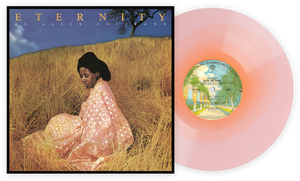Eternity arrived at a transitional point in Coltrane’s artistic and spiritual journey after she had founded her Vedantic Center in 1975, but before she abandoned secular performance for a quarter-century; after she had somewhat shaken the relentless comparisons to her husband’s work (and those who would use “John Coltrane’s widow” in lieu of her name), but still long before she was universally recognized as a musical luminary. Also importantly, after she released a slew of unexpected pop collaborations and as she signed to a major label pouring money into building a new jazz catalog. Secular, agnostically spiritual, and Vedic songs mingle together, as do a range of different musical textures. In this kind of middle place, Eternity showcases Coltrane’s ambition and range, offering a glimpse at sounds and styles she would rarely revisit.









